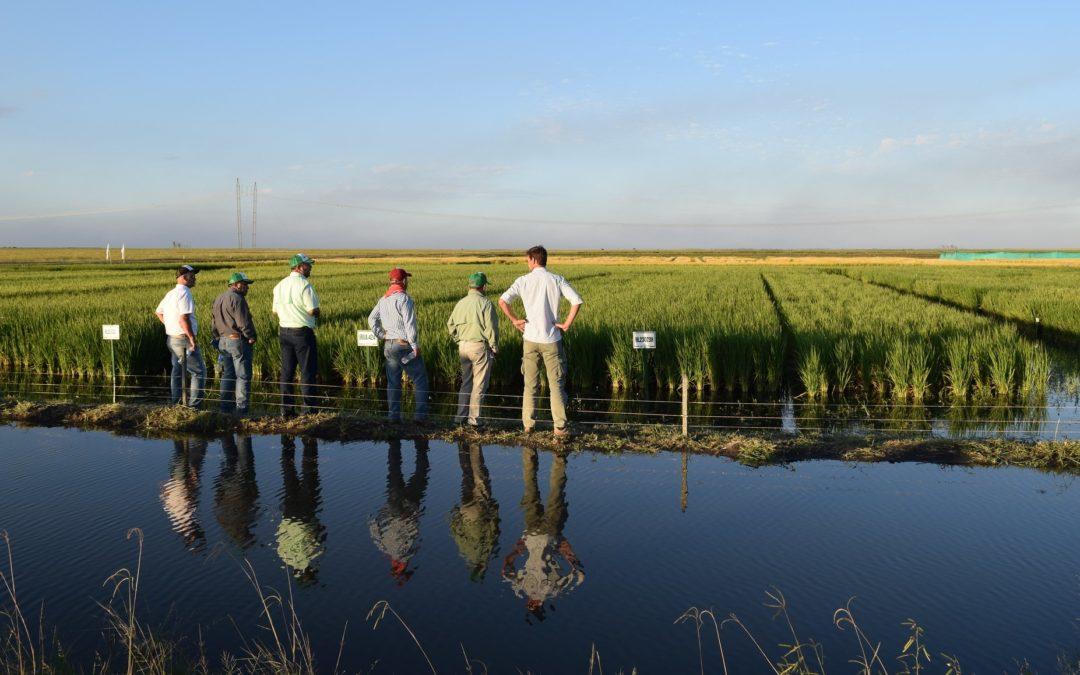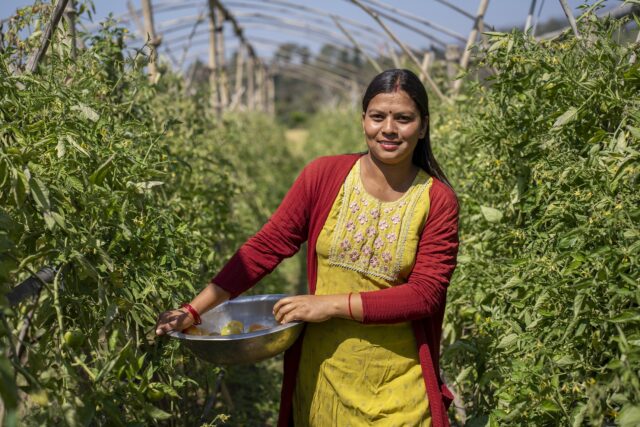
With over 2.3 million confirmed cases to date, and more than a third of the world population under some form of mobility restriction or lockdown, the pandemic caused by COVID-19 has abruptly affected the performance of the world food market, with rice as one of the most notable examples. While the price of some staple foods has decreased due to demand contractions resulting from the COVID-19 pandemic, the price of rice has seen an increase in the market.Rice international export prices in the first quarter of the year held an upward trend, due mainly to the accumulated stock of consumers and traders in different countries, and also due to restrictions on rice exports in Vietnam to ensure their national market supply during the pandemic (FAO 2020b). The reduction of working power for production, disrupted distribution channels, the shift of sowing dates, and the application of new reduction measures on exports are some of the outcomes of the lockdown and mobility restriction measures that several producing countries have implemented, which threatens rice stock in the second half of the year worldwide.International rice prices held an upward trend for the third consecutive month, increasing the FAO All Rice Price Index in 4.5%, compared to December 2019.For instance, countries which are mainly rice importers, like Costa Rica, El Salvador, and Panama, approved new import quotas to ensure supply, while Argentina and Colombia have adopted measures seeking to fix the price and avoid speculation over commodities, including rice. To boost production, some countries, such as Argentina, Bolivia, Colombia, Peru, and Mexico, provided the agricultural sector with new credit funds with preferential interest rates. All this is in addition to measures, such as credit rescheduling and subsidies to the rates for basic services and fuel, implemented by different countries, apart from direct payments and delivery of food kits to low-income households, which are expected to reach a significant proportion of the rural population (FAO, 2020c; IICA, 2020a).Notwithstanding the measures implemented, the economic impacts of lockdown are already being felt in a region with a predominantly informal economy and high social vulnerability. Latin America’s Gross Domestic Product (GDP) is expected to contract 4.6% this year (World Bank, 2020), while a loss of 14 million jobs is foreseen for the second quarter of 2020 (ILO, 2020). This situation is already affecting the population’s purchasing power, which will likely increase rice demand, a staple food with a consumption pattern that tends to increase in periods of economic downturn. Additionally, the reduction of household income is threatening to dramatically increase the number of people suffering from hunger and malnutrition, which adds to the possible scenario of price distortion resulting from the implementation of policies and food shortages, mainly in importing countries, such as Bolivia, El Salvador, Venezuela, Haiti, and Honduras (FAO, 2020d; IICA, 2020b).Facing shortage and price distortion scenarios would be a major challenge for many countries in the region, both for production and consumption. On the side of producers, the competitiveness of many countries in the region is low, with high costs and large gaps in productivity. On the side of the consumer, the price paid is higher than the international price. The data analyzed for 10 countries in the region in 2019 indicate differences ranging from 24% in Brazil, over international market, to 240% in the case of Haiti (FLAR, 2020).All this adds up to the fact that rice is an essential part of the Latin American diet, representing the second main source of calories and the third most consumed food of plant origin in the region (FAO, 2020a). In countries with intensive production systems and a predominant presence of family farmers in the sector, such as Peru, Ecuador, Panama, Bolivia, and Honduras, the sector represents an important source of employment for thousands of rural households. Moreover, rice is a foreign exchange earner for exporting countries, such as Uruguay, Paraguay, Argentina, and Guyana. On the other hand, countries such as Haiti, Panama, Mexico, El Salvador, Venezuela, and Brazil, among others, depend to some extent on imports to supply local demand, with Brazil as the largest rice consumer in the region (FLAR, 2020).Against this background, it is crucial to strengthen rice production and distribution systems at the national and regional level to ensure the sustainability of the sector and well-being of the general population. For this reason, it is necessary to document the effects of the actions implemented by countries in the region on rice production and consumption, which will allow for an evaluation of how the pandemic is affecting actors in the chain, and an analysis of how containment measures implemented by countries can affect rice production and distribution in food systems across the region in the coming months.Faced with this need, the Rice Observatory for Latin America, led by the Applied Economy Laboratory at the Alliance of Bioversity and CIAT and FLAR, in collaboration with the Rice Program at the Alliance and HarvestPlus, is carrying out a participatory diagnostic study with key stakeholders in the region, with the purpose of assessing the impact of COVID-19 on rice production and supply in Latin America.With this study, our organizations seek to prioritize research topics and scale up technologies to respond to the rice sector’s needs and strengthen food security, in line with the policies and actions implemented in the context of this pandemic. Eduardo José Graterol Matute Executive Director of FLARThe diagnostic study is carried out through surveys with key stakeholders, which are members of the network of partners and strategic allies of FLAR and HarvestPlus. The results of the survey will be discussed in a virtual forum to be announced through the Alliance’s and FLAR’s social networks, to be able to draft a report on the situation of the rice sector at the regional level.ReferenciasFAO (2020). The Economy in the Time of Covid-19 (Semiannual Report of the Latin America and Caribbean Region, p. 64). World Bank.FAO. (2020a). Nuevos Balances Alimentarios. FAOSTAT.FAO. (2020b, abril). EST: Informe FAO de actualización de precios del arroz.FAO. (2020c, abril). Herramienta de Análisis de Decisiones de Política Alimentaria y Agrícola (FAPDA). Organización de las Naciones Unidas para la Agricultura.FAO. (2020d, abril). Nueva enfermedad por coronavirus (COVID-19). Organización de las Naciones Unidas para la Alimentación y la Agricultura.FLAR. (2020). Datos de producción y consumo de arroz para América Latina. Observatorio del Arroz para América Latina.IICA. (2020a, febrero 4). Medidas de política y acciones del sector agroalimentario frente al COVID-19. Blog del Instituto Interamericano de Cooperación para la Agricultura(IICA).IICA. (2020b, marzo 31). Vulnerabilidad alimentaria ante el COVID-19. Blog del Instituto Interamericano de Cooperación para la Agricultura(IICA).ILO. (2020). ILO Monitor – 2nd Edition: COVID-19 and the world of work. International Labour Organization.World Bank. (2020). The Economy in the Time of Covid-19 (Semiannual Report of the Latin America and Caribbean Region, p. 64). World Bank.



